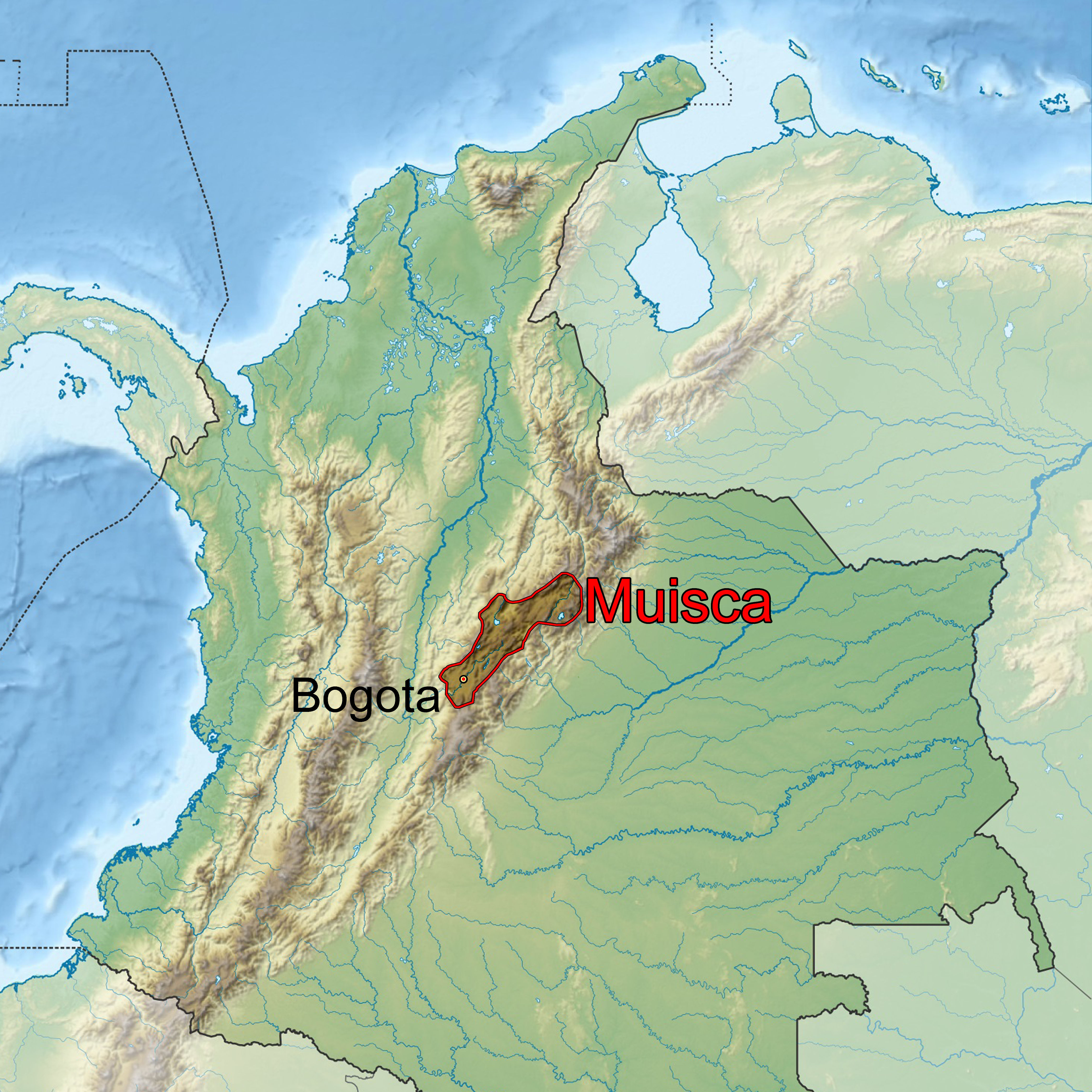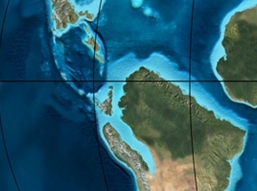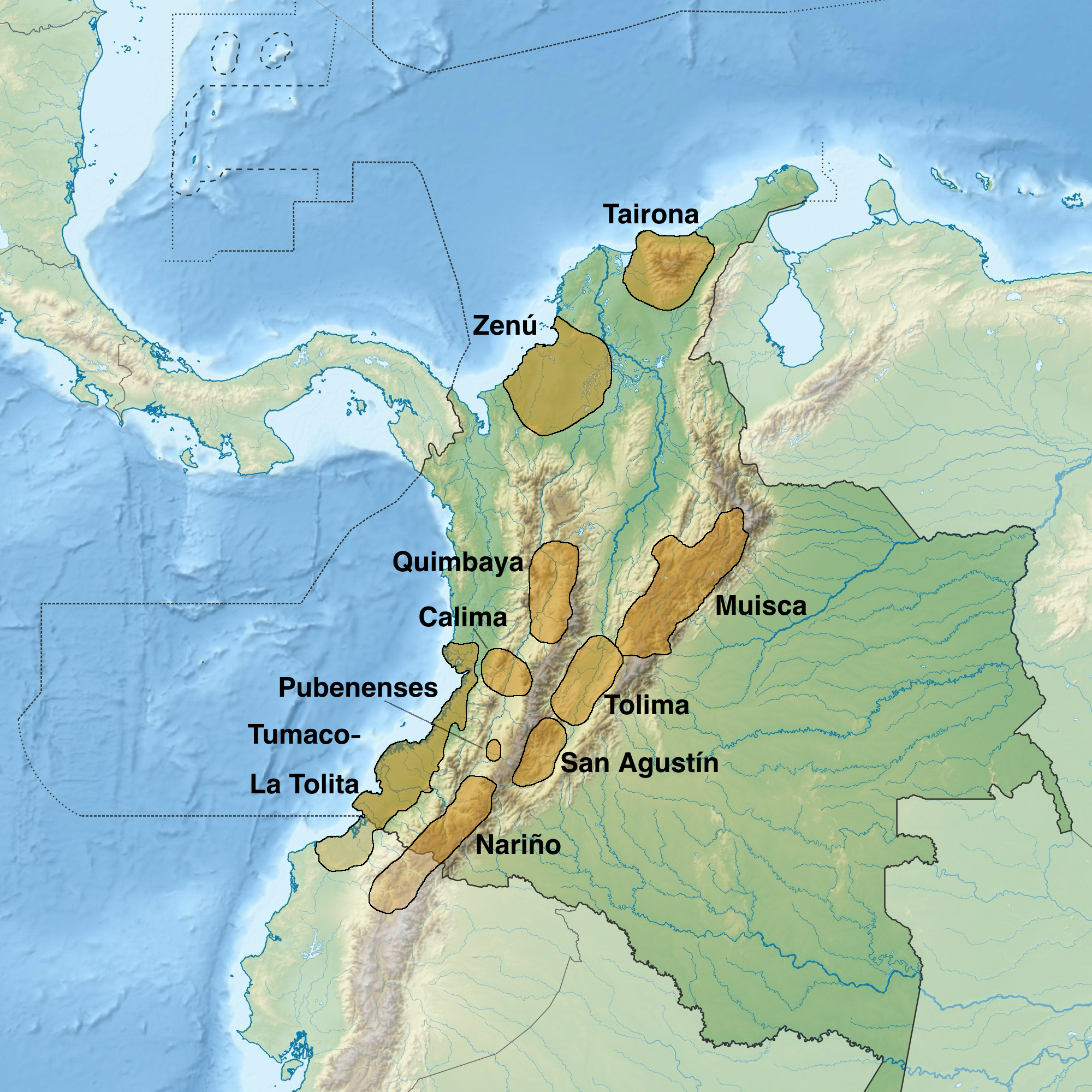|
Muisca
The Muisca (also called the Chibcha) are indigenous peoples in Colombia and were a Pre-Columbian culture of the Altiplano Cundiboyacense that formed the Muisca Confederation before the Spanish colonization of the Americas. The Muisca speak Muysccubun, a language of the Chibchan language family, also called ''Muysca'' and ''Mosca''. The first known contact with Europeans in the region was in 1537 during the Spanish conquest of New Granada. In New Spain, Spanish clerics and civil officials had a major impact on the Muisca, attempting to Christianize and incorporate them into the Spanish Empire as subjects. Postconquest Muisca culture underwent significant changes due to the establishment of the New Kingdom of Granada. Sources for the Muisca are far less abundant than for the Aztec Empire of Mesoamerica or the Inca Empire and their incorporation to the Spanish Empire during the colonial era. In the New Kingdom of Granada and into the colonial era, the Muisca became "th ... [...More Info...] [...Related Items...] OR: [Wikipedia] [Google] [Baidu] |
Muisca Confederation
The Muisca Confederation was a loose confederation of different Muisca rulers (''zaques'', ''zipas'', ''iraca'', and ''tundama'') in the central Andes, Andean highlands of what is today Colombia before the Spanish conquest of the Americas, Spanish conquest of northern South America. The area, presently called Altiplano Cundiboyacense, comprised the current departments of Colombia, departments of Boyacá Department, Boyacá, Cundinamarca Department, Cundinamarca and minor parts of Santander Department, Santander. According to some List of Muisca scholars, Muisca scholars the Muisca Confederation was one of the best-organized confederations of tribes on the South American continent. Other Historian, historians and anthropologists, however, such as Jorge Gamboa Mendoza, attribute the present-day knowledge about the confederation and its organization more to a reflection by Spanish chroniclers who predominantly wrote about it a century or more after the Muisca were conquered and propo ... [...More Info...] [...Related Items...] OR: [Wikipedia] [Google] [Baidu] |
Muisca Raft
The Muisca raft (''Balsa Muisca'' in Spanish language, Spanish), sometimes referred to as the Golden Raft of El Dorado, is a pre-Columbian Votive offering, votive piece created by the Muisca people, Muisca, an Andean people of Colombia in the Cordillera Oriental (Colombia), Eastern Ranges of the Colombian Andes that established multiple chiefdoms in the region. The raft was a propitiatory offering made within the historical context of the emerging muisca chiefdom of Pasca. According to some scholars, the piece probably refers to the gold offering ceremony described in the legend of ''El Dorado'', which occasionally took place at Lake Guatavita. In this ritual, the new chief (''zipa''), who was aboard a raft and covered with gold dust, tossed gold objects into the lake as offerings to the gods, before immersing himself into the lake. However, other Anthropologist, anthropologists and historians consider the raft to not refer specifically to the Guatavita ceremony, as other, similar ... [...More Info...] [...Related Items...] OR: [Wikipedia] [Google] [Baidu] |
Muisca Religion
Muisca religion describes the religion of the Muisca people, Muisca who inhabited the central highlands of the Colombian Andes before the Spanish conquest of the Muisca. The Muisca formed a Muisca Confederation, confederation of holy Muisca rulers, rulers and had a variety of deity, deities, temples and rituals incorporated in their culture. Supreme being of the Muisca was Chiminigagua who created light and the Earth. He was not directly honoured, yet that was done through Chía (goddess), Chía, goddess of the Moon, and her husband Sué, god of the Sun. The representation of the two main celestial bodies as husband and wife showed the complementary character of man and Women in Muisca society, woman and the sacred status of marriage.Muisca religion - Pueblos Originarios - accessed 04-05-2016 The Muisca worshipped the ... [...More Info...] [...Related Items...] OR: [Wikipedia] [Google] [Baidu] |
Spanish Conquest Of New Granada
The Spanish conquest of New Granada refers to the conquest between 1525 and 1540 by the Monarchy of Spain, Spanish monarchy of the Chibcha language-speaking nations of modern-day Colombia and Panama, mainly the Muisca people, Muisca and Tairona that inhabited present-day Colombia, beginning the Spanish colonization of the Americas.Tairona Heritage Trust: Tairona history to the time of the Spanish Invasion Tairona Heritage Trust Accessed 21 August 2007. It is estimated that around 5.25 million people died as a result of Spanish Conquest, either by disease or direct conflict. This represents 87.5% of the Pre-Columbian cultures of Colombia#Population, Pre-Columbian population of Colombia. Pre-Columbian [Baidu] |
List Of Conquistadors In Colombia
This is a list of conquistadors who were active in the conquest of terrains that presently belong to Colombia. The nationalities listed refer to the state the conquistador was born into. Granada and Castile are currently part of Spain, but were separate states at the time of birth of the early conquistadors. Important conquistadors and explorers were Alonso de Ojeda, who landed first at Colombian soil and founded the first settlement ''Santa Cruz'',Personajes de la Conquista a América – Banco de la República |
Altiplano Cundiboyacense
The Altiplano Cundiboyacense () is a high plateau located in the Eastern Cordillera of the Colombian Andes covering parts of the departments of Cundinamarca and Boyacá. (Do not confuse with The Altiplano or the Altiplano Nariñense, both further south.) The altiplano corresponds to the ancient territory of the Muisca. The Altiplano Cundiboyacense comprises three distinctive flat regions; the Bogotá savanna, the valleys of Ubaté and Chiquinquirá, and the valleys of Duitama and Sogamoso. The average altitude of the altiplano is about above sea level but ranges from roughly to . Etymology ''Altiplano'' in Spanish means "high plain" or "high plateau", the second part is a combination of the departments Cundinamarca and Boyacá. Geography The limits of the Altiplano are not strictly defined. The high plateau is enclosed by the higher mountains of the Eastern Ranges, with the Sumapaz mountains in the south and Chingaza to the east. The Tenza Valley is locate ... [...More Info...] [...Related Items...] OR: [Wikipedia] [Google] [Baidu] |
Chibcha Language
Chibcha, Mosca, Muisca, Muysca (*/ˈmɨska/ * �mʷɨska, or Muysca de Bogotá is a language spoken by the Muisca people, one of the many indigenous cultures of the Americas. The Muisca inhabit the Altiplano Cundiboyacense of what today is the country of Colombia. The name of the language ''Muysc cubun'' in its own language means "language of the people", from ''muysca'' ("people") and ''cubun'' ("language" or "word"). Despite the disappearance of the language in the 17th century (approximately), several language revitalization processes are underway within the current Muisca communities. The Muisca people remain ethnically distinct and their communities are recognized by the Colombian state. Important scholars who have contributed to the knowledge of the Muisca language include Juan de Castellanos, Bernardo de Lugo, José Domingo Duquesne and Ezequiel Uricoechea. Classification The Muysca language is part of the Chibcha linguistic family, which in turn belongs to t ... [...More Info...] [...Related Items...] OR: [Wikipedia] [Google] [Baidu] |
Zipa
When the Spain, Spanish arrived in the central Colombian highlands, the region was organized into the Muisca Confederation, which had two rulers; the ''Zipa'' was the ruler of the southern part and based in Funza, Muyquytá. The ''Zaque'' was the ruler of the northern area and based in Tunja, Hunza, known today as Tunja. Organization ''Zipa (Psihipqua)'' and ''Zaque (Hoa)'' were the titles given to these rulers of the ancient confederation. Neither exercised absolute power, not rigid or strict control over those to whom they owed their power, so that they can be considered kings. However, these positions of power were of great honor and were surrounded by a rather elaborate ceremony. The position of the ''Zipa'' was such that not even the members of the nobility dared to look him in the face, and it is said if the ''Zipa'' needed to spit, someone would hold out a piece of rich cloth for him to spit on, because it would be sacrilegious for anything so precious as his saliva to to ... [...More Info...] [...Related Items...] OR: [Wikipedia] [Google] [Baidu] |
Muzo People
The Muzo people are a Cariban languages, Cariban-speaking Indigenous group who inhabited the western slopes of the eastern Colombian Andes. They were a highly war-like tribe who frequently clashed with their neighbouring Indigenous groups, especially the Muisca. The Muzo inhabited the right banks of the Magdalena River in the lower elevations of western Boyacá Department, Boyacá and Cundinamarca Department, Cundinamarca and were known as the Emerald People, thanks to their exploitation of the gemstone in Muzo. During the time of Spanish conquest of the Muisca, conquest, they resisted heavily against the Spanish invaders taking twenty years to submit the Muzo. Knowledge about the Muzo people has been provided by List of Muisca and pre-Muisca scholars, chroniclers Gonzalo Jiménez de Quesada, Pedro Simón, Juan de Castellanos, Lucas Fernández de Piedrahita and others. Muzo territory The Muzo were inhabiting the lower-elevation northwestern areas of the Cundinamarca departmen ... [...More Info...] [...Related Items...] OR: [Wikipedia] [Google] [Baidu] |
Lake Guatavita
Lake Guatavita (Spanish: ''Laguna Guatavita'') is located in the Cordillera Oriental of the Colombian Andes in the municipality of Sesquilé in the Almeidas Province, Cundinamarca department of Colombia, northeast of Bogotá, the capital of Colombia. The lake is circular and has a surface area of . The earlier theories of the crater's origin being a meteorite impact, volcanic cinder, or limestone sinkhole are now discredited. The most likely explanation is that it resulted from the dissolution of underground salt deposits from an anticline, resulting in a kind of sinkhole. There are hot springs nearby in the municipality of Sesquilé, which means "hot water" in the now-extinct language of Chibcha, once spoken by the local indigenous people, the Muisca. Spanish colonizers and Conquistadors knew about the existence of a sacred lake in the Eastern Ranges of the Andes possibly as early as 1531. The lake was associated with indigenous rituals involving gold. However, the firs ... [...More Info...] [...Related Items...] OR: [Wikipedia] [Google] [Baidu] |
Indigenous Peoples In Colombia
Indigenous Colombians (), also known as Native Colombians (), are the ethnic groups who have inhabited Colombia before the Spanish colonization of Colombia, in the early 16th century. Estimates on the percentage of Colombians who are indigenous vary, from 3% or 1.5 million to 10% or 5 million. According to the 2018 Colombian census, they comprise 4.4% of the country's population, belonging to 115 different tribes, up from 3.4% in the 2005 Colombian census. However, a Latinobarómetro survey from the same year found that 10.4% of Colombian respondents self-identified as indigenous. The most recent estimation of the number of indigenous peoples of Colombia places it at around 9.5% of the population. This places that Colombia as having the seventh highest percentage of Indigenous peoples in the Americas with Bolivia, Chile, Ecuador, Guatemala, Peru, and Panama having a higher estimated percentage of Indigenous peoples than Colombia. The percentage of Indigenous peoples has bee ... [...More Info...] [...Related Items...] OR: [Wikipedia] [Google] [Baidu] |
Panche People
The Panche or Tolima are an indigenous peoples of Colombia, indigenous group of people that lived in what is now Colombia. They inhabited the southwestern parts of the Departments of Colombia, department of Cundinamarca Department, Cundinamarca and the northeastern areas of the department of Tolima Department, Tolima, close to the Magdalena River. At the time of the Spanish conquest of the Muisca, Spanish conquest, more than 30,000 Panche were living in what would become the New Kingdom of Granada. Early knowledge about the Panche has been compiled by List of Muisca scholars, scholar Pedro Simón. Panche territory The Panche were inhabiting the lower altitude southwestern areas of the Cundinamarca department, close to the Magdalena River. Their northern neighbours were the Muzo people, Muzo in the northeast and the Pantágora people, Pantágora in the northwest, in the east the Muisca people, Muisca, in the southeast the Sutagao people, Sutagao and to the south and southwest ... [...More Info...] [...Related Items...] OR: [Wikipedia] [Google] [Baidu] |








